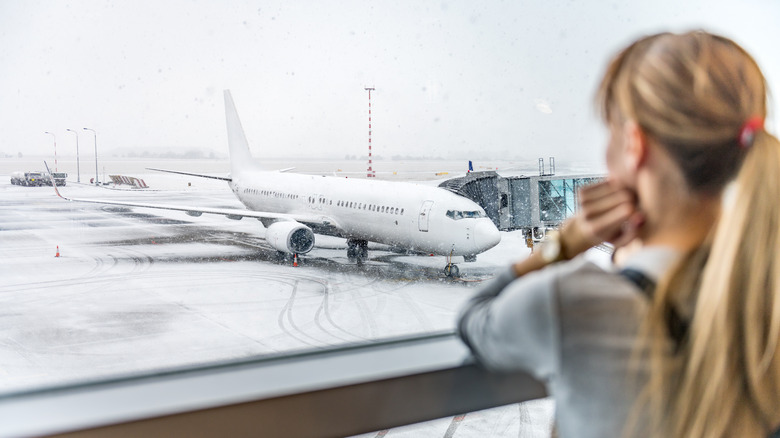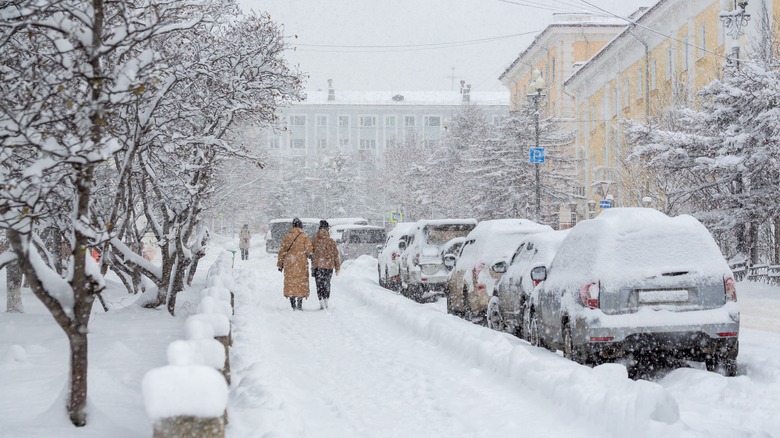How The 2023-2024 Winter Weather Predictions May Affect Your Travel
Winter is typically an off-season for vacations, but the holiday travel frenzy can be an exception. As the weather becomes colder and snow starts to fall, many people begin planning a holiday road trip home. But this season, flying might gain the advantage. TSA, the Transportation Security Administration, is predicting holiday travel in 2023-2024 to be at its highest levels in history. With seven of the busiest travel days for airlines already recorded this year, the holiday season is bound to set records. Whether you're driving, flying, or traveling by bus, winter weather this season will impact your travel plans.
After several seasons of La Niña conditions, NOAA forecasts a much different story this winter. A switch in weather patterns means that the 2023-2024 winter may be warmer and wetter than previous years for many regions in the United States. The impact on holiday travel could be significant, especially for those planning to visit popular winter destinations in the North or traditionally warmer-weather beach towns in the Southeast and West.
According to the Farmer's Almanac's extended winter forecast for this season, there is a chance for some blizzard conditions in portions of the country and a longer winter season for some areas with snowfall into April. Travelers, particularly in the far northern and southern regions of the United States, should be aware that the season will bring a different mix of weather conditions than usual. Planning for potential weather delays and disruptions is vital.
El Niño brings warmer temperatures to the Northern U.S.
At the end of the 2023 summer season, the cyclical weather phenomenon El Niño formed (caused by warming ocean temperatures in the Pacific) and will influence winter conditions. With the last El Niño recorded in 2018-2019, this winter season could see unseasonably higher temperatures in the Northern U.S. and lower temperatures in other areas. Travelers planning trips throughout the season to northern states, like Montana, Wisconsin, and Michigan, may experience warmer temperatures and lower snowfall totals than usual (or equal, in some areas).
According to the NOAA, in December, January, and February, temperatures will lean toward above-average levels across the Northern U.S. (33% to 50% above normal). The Pacific Northwest and far northeastern states, like Maine, New Hampshire, and Vermont, could see up to 60% warmer temperatures than the seasonal average. States across the Southern U.S. may experience normal to near-normal temperatures in the first months of the winter season.
As the season continues through February, March, and April, the chance for warmer temperatures recedes slightly but will still be between 33% and 40% warmer in the northern U.S. In Texas, though, unseasonably low temperatures will remain prevalent through the end of winter. Low temperatures mixed with slightly higher precipitation may make travel in Texas during these months unpredictable, so travelers should plan accordingly.
A wetter-than-average winter
The most immediate concern for winter travelers is the potential disruption of transportation services. Snow and ice can lead to flight delays, cancellations, and road closures. It's crucial to stay informed about local weather-related advisories and make flexible travel arrangements to mitigate issues in these higher precipitation areas. While El Niño's impact in the Northern U.S. will lead to a milder winter, southern regions may see increased precipitation and storm intensity.
The National Weather Service predicts up to 90% more precipitation across the southern U.S. from December through February, particularly in the Southeast. The likelihood of increased precipitation remains in the Southeast through April. Accuweather meteorologists also predict snowfall in Northeast areas like New York, Boston, and Philidelphia will be much higher than in the 2022-2023 season despite the above-average temperatures. Travel across both regions may likely be impacted by winter storms, so travelers should monitor weather updates closely throughout the season.
Snowfall across areas of the Midwest and Rockies is expected to be on par with the previous year, while the Pacific Northwest is projected to be drier than normal. Midwest travelers may encounter conditions more on par with last winter's, but those traveling to the Northeast, Southwest, or Southeast should plan for the unexpected. If you're journeying to these regions this winter, consider opting for travel insurance that covers weather-related disruptions. With such unique conditions across the country, it's better to be prepared for any potential challenges that may arise.


